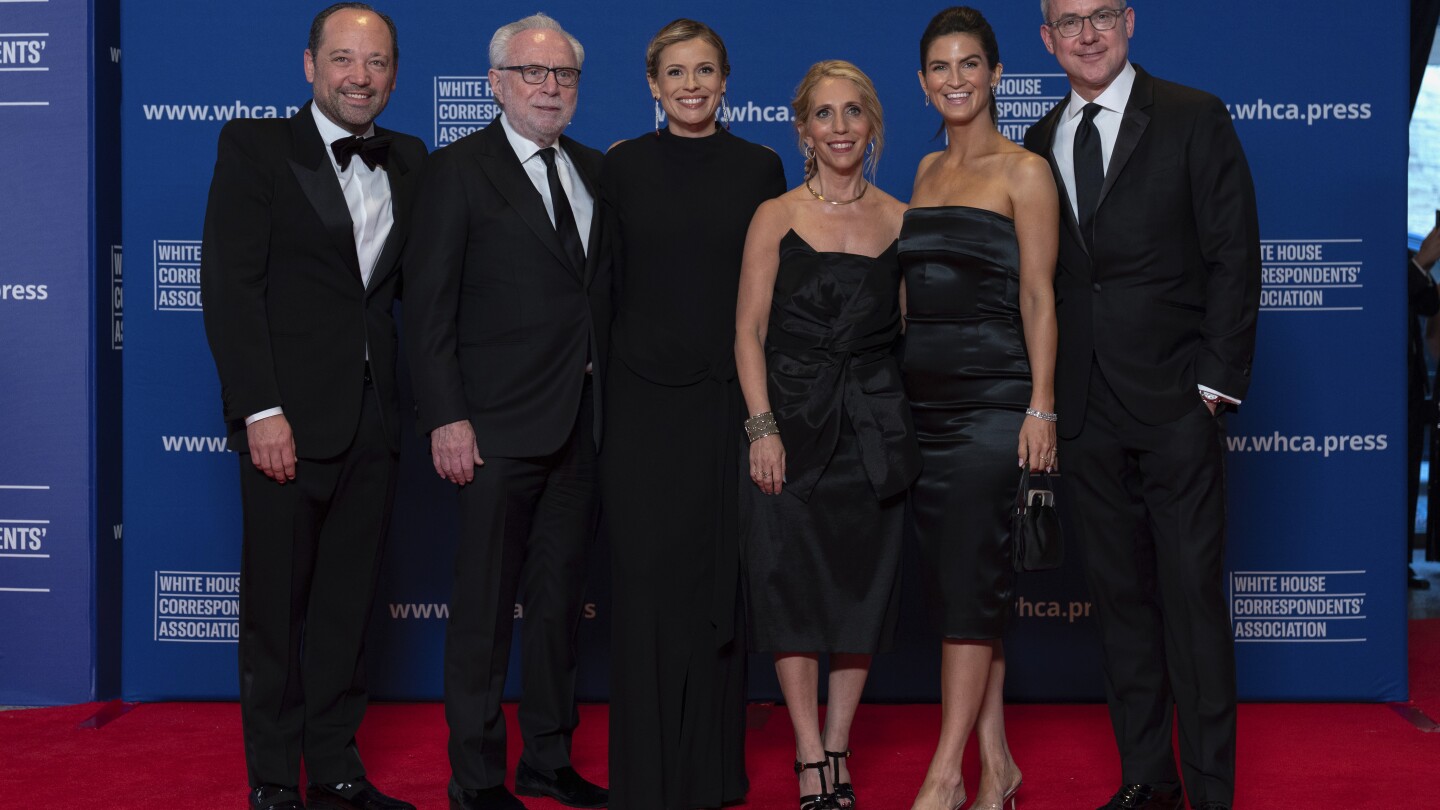Lifestyle
A bushel of fruit and vegetable motifs give decor a healthy farmstand vibe

Interior designer and stylist Jonny Carmack has a “fruit room” in his Danbury, Connecticut, home. Colorful faux produce bedecks every inch, from the cherry-shaped ceiling fixture to a strawberry side table and a bunch of other juicy gems in decorative forms.
He’s part of a trend: Love for fresh fruits and vegetables is showing up not just in the kitchen but in imagery throughout the home.
Carmack sees it as fun escapism, and “a cause for conversation and celebration.” Design experts say it also reflects a cultural embrace of sustainability and an upbeat connection to nature.
“There’s a certain romance to the farmstand — it speaks to the pastoral lifestyle everyone’s craving these days,” says Rachel Hardage Barrett, Country Living magazine’s editor-in-chief.
“This gravitation toward produce motifs intersects with spikes in interest around gardening, wellness and antiques.”
Barrett sees the trend in everything from home decor to apparel. She notes the recent viral trend Tomato Girl Summer; along with the color red, and various iterations of tomatoes, the vibe was one of Mediterranean cafes, beach walks and lazy summer days.
“Tomato Girl Summer obviously had a good run, but now there’s a whole bumper crop of produce to choose from, from cabbage and radishes to strawberries and peaches,” Barrett says.
Nostalgia is in play, too
Barrett sees a revival in interest around items with cabbages and lettuce, which were common motifs in the 18th and 19th centuries. Cabbageware and lettuce ware enjoyed a revival with the Palm Beach crowd in the ‘60s, with fans like Jacqueline Kennedy, Bunny Mellon and Frank Sinatra. Now, they’ve found a new audience.
“It ties into the ‘grandmillennial’ design movement that champions beloved heirlooms,” Barrett says. “Target recently introduced a cabbageware-inspired collection that garnered more than 15 million TikTok posts.”
Social media has helped drive the fruity décor trend. In 2023, TikTokers went wild over a lemon-shaped ceramic stool at HomeGoods. The piece sold out, but the popularity of tables shaped like citrus wedges continued to grow.
This winter’s interior design, décor and lifestyles shows in Paris and Frankfurt, Germany, sometimes felt more like vibrant produce markets than trade fairs.
Booths at Maison et Objet and Ambiente were full of planters festooned with 3D grapes and watermelons; mirrors encircled in peapods or pineapples; tomato-covered cups, glasses and tableware. Lamp shades and tablecloths wore artful imagery of berry baskets and carrot bunches. Cushions burst with juicy prints. Vases were peppered with — well, peppers, in clay or papier-mache.
Los Angeles-based design editor and author Courtney Porter was at February’s Ambiente fair in Frankfurt and enjoyed seeing the playful directions that designers were taking the trend. “Colors were supersaturated, shapes were exaggerated and cartoonish,” she said.
And she liked the obvious tie-in to healthy living.
“There’s an emphasis on sustainable materials and youthfulness with this trend, as well. People are nostalgic for natural abundance,” she said.
Designers just wanna have fun
Carmack, whose social media accounts include @vintageshowpony, says the Fruit Room has been his most popular design project, “and it’s because of the cartoon references like Dr. Seuss and Animal Crossing. It just makes people happy.”
A fantastical fruit called the truffula shows up in “The Lorax.” And fruits in the Animal Crossing video games serve as trade tokens, village builders and currency.
Carmack imparts a little personality to his favorite fruits.
“Cherries are flirty and fun. Strawberries are like their younger sisters, cutesier and sweeter in nature,” he says.
Cookbook author and food columnist Alyse Whitney has embraced what’s sometimes referred to on social media as the “Grocery Girl” vibe. Her apartment’s got a wreath made out of metal mushrooms and a ceramic stool that looks like a cut lemon. Then there’s all the banana-themed stuff: a platter, salt and pepper shakers, napkin rings.
Whitney says she’s been drawn to food décor her whole life, collecting fun pieces from discount retailers and thrift stores. But when she moved from New York to Los Angeles, she went to an estate sale.
“There, I got my first Murano-style glass produce — a bell pepper, a peach and a pear. And a small ceramic soup tureen shaped like a head of cauliflower, complete with 3D leaves and a matching plate that looked like its root and greens.” Those pieces got her on a full-fledged food collectible mission.
It’s a trend that spans decorating aesthetics, says Barrett.
“If your style is more retro or youthful, you can embrace a little kitsch. For a more sophisticated look, opt for fruit motifs in the form of wallcovering or fabric,” she says.
So, eat it or decorate with it; there are lots of ways to show your love for a favorite veg or fruit.
“Dressing your home with this aesthetic is an experiment in self-expression that so many people are connecting to,” says Carmack, “and I love to see it.”
___
New York-based writer Kim Cook covers design and decor topics regularly for The Associated Press. Follow her on Instagram at @kimcookhome.
For more AP Homes stories, go to https://apnews.com/hub/homes.
Lifestyle
Campgrounds and visitor centers at federal lakes are closing amid Trump’s budget cuts

TOPEKA, Kan. (AP) — Campgrounds, boat ramps and other facilities in at least 30 locations at federal lakes and reservoirs in six states will be closed or have their hours curtailed as of mid-May as the Trump administration tries to rapidly shrink the U.S. government.
Officials at the U.S. Army Corps of Engineers, which oversees the lakes and reservoirs and their amenities for boating, camping, hiking and sightseeing, said they are dealing with staffing shortages and other budgetary restrictions.
Corps spokesman Douglas Garman said concentrating staff at fewer recreational sites will allow those sites to keep the “full range of services” that visitors expect.
The Corps’ district office in Omaha, Nebraska, which oversees facilities across a large swath of the Great Plains from western Iowa and Nebraska to Montana’s border with Canada, said the changes also will protect hydropower and dam operations.
“Decisions to make operational changes at recreation areas are not made lightly, and we understand those decisions can be disruptive to the public’s travel plans,” Garman said in an email to The Associated Press.
President Donald Trump imposed a federal hiring freeze after beginning his second term in January, and his Department of Government Efficiency is trying to eliminate tens of thousands of government jobs.
In Pickstown, South Dakota, residents were “appalled” to learn the Corps plans to close its visitor center at the Fort Randall Dam and suspend tours of the dam’s powerhouse on May 1, said Cindy Broyhill, the president of the town’s Board of Trustees.
“”We have a lot of fishing and boating, but we also have a lot of just plain tourists coming through to see the dam,” Broyhill said of Pickstown, located a little more than a half-mile (0.8 kilometers) east of the dam on the Missouri River, about 4 miles (6.4 kilometers) north of the Nebraska state line.
“I think there are other places where they could cut that would make more sense,” she added.
In western Kansas, Sue Graham, manager of Knothead’s bait shop and camping supply store on the east side of Wilson Lake, was skeptical of a plan to limit a campsite there to daytime use as of May 15. The lake is about 230 miles (370 kilometers) west of Kansas City, home to the Corps district office for parts of Kansas, Missouri and southern Nebraska.
Graham doesn’t think the move will save much money because the campsite is used only by residents who own boat ramps nearby, but Corps officials would “shoot themselves in the foot” if they went further because of lost fee revenues, she said, adding that she does not expect her shop to be affected.
“People are still going to come out,” Graham said.
The Kansas City district plans to close visitor information centers at two Kansas lakes including Hillsdale, outside the Kansas City area, and Kanopolis, in central Kansas. The Corps will not allow overnight camping in 25 “primitive,” no-amenities spots in two areas at Harlan County Lake in western Nebraska near the Kansas state line. The sites and water nearby still will be accessible during the day.
Emily Coffin, the district’s natural resource section chief, said the district has pursued efficiency initiatives for five or six years that will lead to fewer visitor-staff interactions. They include self-service campsite registrations, cashless parking and payments through codes scanned with smartphones.
“It just may be a little bit more noticeable because we have more of that built on than maybe we did two years ago,” she said.
In March, the Corps’ Baltimore district closed three campgrounds at Raystown Lake in central Pennsylvania and a campground, swimming beach and boat ramp at Cowanesque Lake in northern Pennsylvania.
The Omaha district announced earlier this month that it would close six campgrounds in the Dakotas on May 1, as well as three visitor centers in South Dakota and Montana. It also plans to suspend or limit tours of four South Dakota dam powerhouses and decrease tours at Fort Peck Dam in northeast Montana.
The Corps district for southeastern Washington state announced last week it was closing two visitor centers and eight camping and recreation areas there.
“By concentrating our resources, we can better maintain essential missions,” Lt. Col. Katie Werbeck, the district’s commander, said in a statement.
Lifestyle
White House journalists use annual press dinner to celebrate First Amendment

There was no president. There was no comedian. What remained at the White House Correspondents’ Association’s annual dinner on Saturday night were the journalists and the First Amendment.
The stripped-down festivities were a reflection of the somber tone in Washington at the beginning of President Donald Trump’s second term, in which he has battled with the press on multiple fronts and wrested from the correspondents’ association the power to decide which outlets have the most access to Trump.
Trump’s deeper involvement in politics began after then-President Barack Obama roasted the New Yorker’s presidential ambitions during the 2011 correspondents’ dinner. He skipped the annual gala during his first term, and his absence had been widely expected this year.
The association scrapped a scheduled appearance at this year’s dinner by comedian Amber Ruffin after she referred to the new administration as “kind of a bunch of murderers” on a podcast last month. The organization, a nonprofit that helps White House journalists provide robust coverage of the presidency, decided to forgo the event’s traditional levity and focus on celebrating journalism.
Association President Eugene Daniels said in an email to the organization’s 900 members last month that the dinner was meant to “honor journalistic excellence and a robust, independent media covering the most powerful office in the world.”
The event, which raises money for journalism scholarships, remains a highlight of the Washington social calendar. The ballroom at the Washington Hilton was still packed with journalists, newsmakers and even a few celebrities. Daniels singled out Debra Tice, whose son Austin has been missing for a decade since disappearing in Syria.
“We’ve been tested and attacked. But every single day our members get up, they run to the White House — plane, train, automobile — with one mission, holding the powerful accountable,” Daniels said.
He later showed a video of past presidents, from Ronald Reagan to Joe Biden, who addressed the dinner, saying that the association invites the president to demonstrate the importance of a free press in safeguarding democracy.
Trump counter-programmed the last dinner during his first term, holding a rally to compete with the event in 2019, before the coronavirus pandemic canceled the 2020 dinner. This year, Trump had just flown back from Pope Francis’ funeral in Rome and had no events Saturday night.
The Trump administration has had multiple skirmishes with the press in recent months. The FCC is investigating several media companies, the administration is working to shut down Voice of America and other government-run outlets, and The Associated Press has sued the administration for reducing its access to events because it has not renamed the Gulf of Mexico in line with Trump’s executive order.
A federal judge has issued a preliminary injunction ordering the administration to stop blocking the AP from presidential events. In response, the White House adopted a new press policy that gives the administration sole discretion over who gets to question Trump and sharply curtails the access of three news agencies, including AP, that serve billions of readers around the world.
For many years previously, the correspondents’ association determined which news organizations had access to limited space events.
Alex Thompson of Axios, who won The Aldo Beckman Award for his coverage of the coverup of Biden’s decline while in office, addressed complaints from some on the right that the press had gone too soft on the Democrat.
“We — myself included — missed a lot of this story, and some people trust us less because of it,” Thompson told the room of journalists. “We bear some responsibility for faith in the media being at such lows.”
Saturday’s dinner also recognized the winners of a number of journalism awards, in addition to Thompson. They included:
—The Award for Excellence in Presidential Coverage Under Deadline Pressure (Print): Aamer Madhani and Zeke Miller of the AP, for reporting on the White House altering its transcript to erase Biden calling Trump supporters “garbage.”
—The Award for Excellence in Presidential Coverage Under Deadline Pressure (Broadcast): Rachel Scott of ABC News, for her coverage of the attempted assassination of Donald Trump.
—The Award for Excellence in Presidential News Coverage by Visual Journalists: Doug Mills of the New York Times, for his photograph of Biden walking under a painting of Abraham Lincoln.
—The Katharine Graham Award for Courage and Accountability: Reuters, for its series on the production and smuggling of the deadly narcotic fentanyl.
—Collier Prize for State Government Accountability: AP for its series, “Prison to Plate: Profiting off America’s Captive Workforce.”
—Center for News Integrity Award: Anthony Zurcher of the BBC for his coverage of the fallout from Biden’s handling of the Gaza War.
Lifestyle
New Orleans Jazz Fest showcases Louisiana music students

NEW ORLEANS (AP) — The New Orleans Jazz and Heritage Festival each spring is known for hosting some of the world’s most famous jazz, funk and rock acts. Yet it’s also become a showcase for lesser-known talent: local schoolchildren.
Gospel choirs from area high schools took the stage Friday at the festival’s famed Gospel Tent, continuing a decades-long tradition for Louisiana students.
First up to perform was the Eleanor McMain choir, jolting the audience with a blast of musical joy, from the rollicking call-and-response of “Melodies From Heaven” to an a cappella rendition of the “Battle Hymn of the Republic.”
Choir member Chloe Bailey, 18, said the performance is about pride.
“Not only do I get to make myself proud, my parents proud, I get to make the whole world proud and have a look of how beautiful it is to see Black people and Black children thriving and going up higher, because we don’t get a lot of opportunities like this,” she said.
In a city with a rich music heritage, the festival is a prized opportunity to celebrate arts that teachers say do not receive the attention they once did in schools.
Music education suffered in New Orleans in the 1990s due to funding cuts, said Matthew Sakakeeny, a professor of music at Tulane University. Up until then, majority Black schools typically had at least one full-time music teacher, even when schools were segregated, but dozens of teachers lost their jobs and offerings were “drastically cut back,” he said.
Hurricane Katrina was another blow, leading to the city’s traditional public schools being replaced with charter schools. Sakakeeny said there’s enormous pressure to focus on core academics, rather than arts, as they’ll get shut down if their test scores are not good enough.
“It’s just ironic that we’re the birthplace of jazz, yet middle school students, elementary school students might not even go to a music class,” said Emeka Dibia, the choir director McDonogh 35, the first public high school established for Black students in New Orleans.
Gospel has been an integral part of Jazz Fest since it began in 1970, headlined by gospel legend Mahalia Jackson. Students from McDonogh 35 started performing in the 1970s, and more schools followed, Dibia said. It’s now tradition for Jazz Fest to have a day featuring student gospel choirs.
Even the artist featured on this year’s official Jazz Fest poster, Tarriona “Tank” Ball of Tank and the Bangas, performed in the Gospel Tent when she was in ninth grade.
Choirs from another historic Black public high school, L.B. Landry, as well as two local Christian schools performed Friday, while McDonogh 35 will perform next week.
McMain soloist Tyree Arso, 18, said it’s amazing to think about performing at the same festival as artists like Lil Wayne.
“It makes me recognize the people who have come before me, and it reminds me to try to do my best to honor them,” said Arso, who will attend the Boston Conservatory at Berklee next year.
Gospel choir is an extracurricular activity at schools like McMain, where choir director Clyde Lawrence has been mentoring young singers for decades. He said religious music is allowed in a public school setting because there’s educational value to learning about a variety of musical styles.
“I want to expose them to our heritage, to gospels, to hymns,” he said.
Choirs are paid to perform at Jazz Fest, which provides funding for arts education. But the opportunity matters for other reasons to students like Leah Hawkins, a sophomore at McDonogh 35.
Leah says she’s been surrounded by gospel her whole life, but in front of an audience she’d shake with stage fright. Her mom told her to join choir anyway: “You’re going to sing.”
Since then, Leah, 16, said her confidence has blossomed.
“You can’t care about what people think. If you have a voice then use it, it doesn’t matter what it’s for,” said Leah.
Her choirmate Wesley Whitsett, 17, said he also needed an adult to push him to get over his nerves. Both students sang with a student choir at the opening of this year’s Super Bowl, performing “Lift Every Voice and Sing” with Ledisi.
“I didn’t know I could do that. I thank God that he gave me the opportunity to sing,” said Wesley.
Yet even for kids who have performed at the Superdome, there’s something about the Gospel Tent stage. There may have been millions of people watching the Super Bowl, but Jazz Fest represents New Orleans’ soul.
“I don’t even know what kind of feeling it is,” said Leah. “It’s a very big feeling, I can say that.”
___
The Associated Press’ education coverage receives financial support from multiple private foundations. AP is solely responsible for all content. Find AP’s standards for working with philanthropies, a list of supporters and funded coverage areas at AP.org.
-

 Education1 day ago
Education1 day agoHavard students and faculty face the fallout from a showdown with Trump
-

 Sports1 day ago
Sports1 day agoBoston Celtics criticize Orlando Magic’s physicality after another injury in Game 3 loss
-

 Sports1 day ago
Sports1 day agoPittsburgh Steelers’ first-round draft pick loses mother hours after being selected
-

 Europe1 day ago
Europe1 day agoRecord-breakers, from the world’s tallest bridge to the world’s smallest park
-

 Europe1 day ago
Europe1 day agoLive updates: Funeral of Pope Francis, interred at Santa Maria Maggiore
-

 Sports1 day ago
Sports1 day agoTrendlines: Everything about the NFL draft is trending up
-

 Sports1 day ago
Sports1 day agoLondon Marathon: Why more people than ever before are running marathons
-

 Conflict Zones1 day ago
Conflict Zones1 day agoAt least 11 killed in suspected RSF drone attack on Sudan displacement camp | Sudan war News




